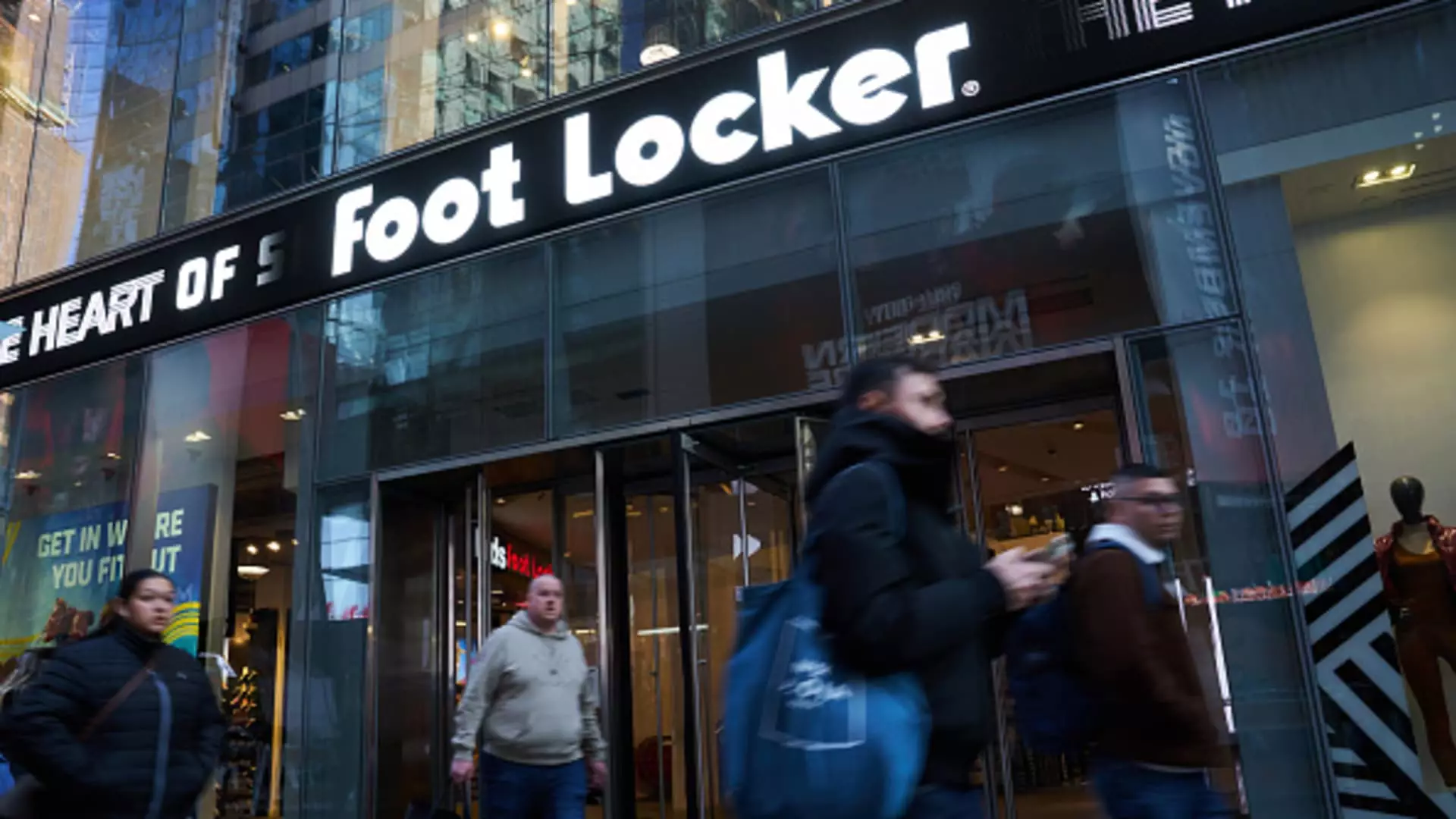Foot Locker recently announced that its same-store sales grew for the first time in six quarters, with a 2.6% increase in the fiscal second quarter. This positive growth was higher than the 0.7% expected by analysts, showing that the company’s efforts to refresh stores and improve the customer experience are paying off. Despite these promising results, the company’s shares dropped about 8% in premarket trading, indicating that investors may have concerns about the future.
Foot Locker’s financial performance in the second quarter exceeded Wall Street’s expectations. The company reported a loss of 5 cents adjusted per share, compared to the 7 cents expected by analysts. Additionally, revenue reached $1.90 billion, surpassing the $1.89 billion expected. While the company still experienced a loss of $12 million in the quarter, its sales rose by about 2% from the previous year. Looking ahead, Foot Locker maintained its guidance for the fiscal year, expecting sales to range from a 1% decline to 1% growth, better than analysts’ prediction of a 0.4% decline.
Under the leadership of CEO Mary Dillon, Foot Locker has undertaken strategic initiatives to transform the company and remain competitive in the evolving retail landscape. Dillon has focused on improving relationships with brand partners like Nike, revamping store locations, and investing in store upgrades. The company plans to invest $275 million in store renovations this year, with a goal of remodeling two-thirds of its stores by the end of fiscal 2025. These investments have led to increased conversion rates, basket sizes, and profitability, particularly in the women’s business segment.
To streamline costs and improve efficiency, Foot Locker announced the closure of stores and e-commerce operations in several countries, including South Korea, Denmark, Norway, and Sweden. The company also plans to rely on a third party for operations in Greece and Romania, where it aims to expand its presence. By making these changes, Foot Locker hopes to optimize its resources and focus on markets with the most potential for growth. Additionally, the company’s Champs banner, which has been underperforming, is showing signs of improvement, with a decrease in comparable sales in the recent quarter compared to the previous year.
Strategic Relocation for Efficiency
Foot Locker is planning to move its global headquarters from New York City to St. Petersburg, Florida, in late 2025. This relocation is intended to enhance collaboration among teams and reduce costs, with the company expecting a 0.2 percentage point increase in margins by 2027. CEO Mary Dillon emphasized that the decision was not solely based on cost savings but also on improving collaboration and momentum within the organization. Despite the relocation, employees will not be required to move, and Dillon, who is based in Chicago, will continue to travel extensively to engage with teams and partners around the world.
Customer-Centric Approach
As Foot Locker focuses on enhancing stores, products, and the overall customer experience, the company is successfully driving sales in a challenging retail environment. CEO Mary Dillon emphasized the importance of meeting customer needs and providing a superior shopping experience, which has been reflected in the company’s positive results. Despite external factors such as inflation and high interest rates impacting consumer spending, Foot Locker has managed to maintain growth by staying relevant to its core customer base.
Foot Locker’s recent performance highlights the company’s ability to adapt to changing market dynamics and drive growth through strategic initiatives. By focusing on customer needs, investing in store upgrades, and optimizing operations, Foot Locker is positioning itself for long-term success in a competitive retail landscape.

